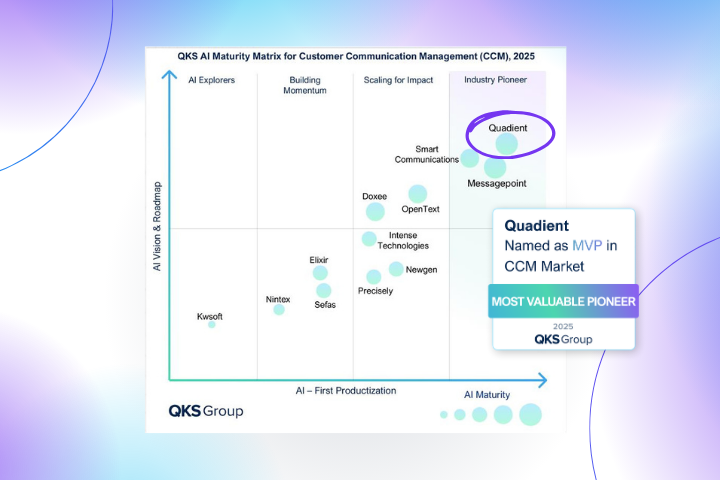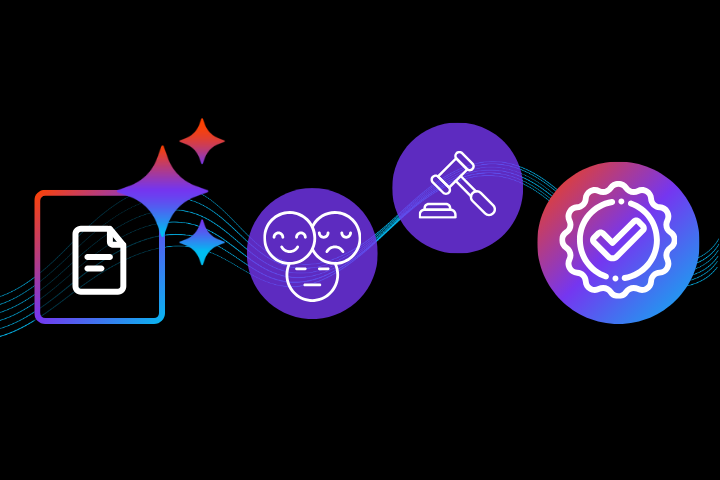
It might seem a bit oxymoronic to put those two words together - collections and brand loyalty. One suggests chasing errant customers, and the other suggests those customers would never be errant in the first place.
Collections, however, is one of the best places where your business has the opportunity to solidify your customer relationships. It’s where you have the most frequent, direct and regular contact with your customers. In today’s Covid-19 climate, doing this in a proactive and understanding manner is more important than ever.
And leveraging artificial intelligence and machine learning tools is the best way to ensure you’re staying on top of this, to the benefit of your business and your customer.
Mehmet Shah, from StackAdapt, implemented YayPay to take advantage of the AI/ML capabilities. In a recent webinar, he said, “We now have a better sense of each customer’s “story” and how their own business is running, we can proactively partner with them to help them navigate challenges. This preserves what are some long-standing, important relationships and gives us clearer insight into what our cash flow and revenue forecast truly looks like. Better and more accurate data, in a single portal view, helps us make smarter decisions.”
Managing your collections
Collections management is a sensitive area, and handling each step with thoughtfulness and deliberate action will keep both sides of the relationship on track.
Collections management consists of a number of different activities:
- Collections strategy and customer follow up. Using email, phone or other means to connect with customers and remind them of payments due.
- Inbound request processing. Reacting to inbound requests from customers for questions related to processing disputes, finding solutions to problems, copies of invoices or information for payments, etc. Usually these requests are coming over the email or phone calls.
- Interdepartmental collaboration. Resolving customer issues can go beyond just the finance team - for example, to understand what’s going on with product delivery or what previous agreements they had with customers, AR and collections teams will work with sales and operations team members.
- Analytics. Reporting and analyzing all steps of the collections process, including cash forecasting, team performance, collections metrics, etc
All of these activities are often handled manually - AR and collections teams are sifting through individual phone messages and emails, trying to figure out which are of the highest priority and which can wait. Then they are searching for documentation, which is often found in a variety of locations - the CRM, the ERP and in billing software; and finally, they are chasing their colleagues for more information or to request assistance.
It’s all very time consuming. And manual. And in today’s work-from-home environment, it can be difficult to chase down both information and co-workers. You can’t simply walk down the hall to a filing cabinet for a copy of an invoice, or to the sales rep’s desk for a quick conversation.
Prioritization
While there are many areas in which a smart AR platform can help you automate and streamline processes and improve access to data, when it comes to collections and customer loyalty, there are some specific features you should look for.
- Prioritizing inbound requests. A smart AR platform will leverage machine learning and predictive analytics to scan and analyze incoming emails, flagging for your AR specialists which ones require immediate attention (say, disputes) and which ones can wait an extra hour or two.
This prioritization saves your team time and makes them more efficient. It also ensures that the most urgent customer requests are being handled first so that your business - and your customer’s business - can keep moving forward.
Customers who feel they are heard, and responded to, in a timely manner, are far more likely to maintain a close and satisfied relationship with your business. They know that their business is important to you, and they are inclined to reciprocate. Even for difficult conversations regarding a dispute or late payment, a customer who feels heard and valued will work harder to find a satisfactory resolution than one who is feeling ignored or marginalized.
Detect unusual customer behavior
- Detect unusual customer behavior. When customers change the way they pay a business or communicate with it, it might be a leading indicator of the potential payment issues in the future, or in general, decreasing credibility of a customer. If those anomalies go unnoticed, it can mean significant payment delays or bad debt for the company.
For example, if a customer was always paying 7-10 days after the due date, consistently, but now they are starting to delay the payment to day 15. Or if a customer was always responding to collection emails, but now they are ignoring incoming communication.
These flags do not necessarily mean that something bad is happening, but if they happen together or sequentially - this is a strong indication that soon there’s going to be a problem with this customer. And the earlier you can see this, the sooner you can address it with your customer.
Early conversations with customers about changes in their business and business patterns can yield important results - both in terms of finances and the customer relationship. Covid-19 is impacting businesses in all kinds of ways - some are actually growing (the gaming industry) and some are seriously struggling (the hospitality industry), while others are pivoting (manufacturers) into new lines of business.
Understanding your customer’s story, and having a conversation about what it means to your partnership, can help both your business work through uncertain times.
Putting AI and Machine Learning into practice
- Suggest best dynamic incentives. Machine learning algorithms can help determine what’s the best “offer” to put in front a customer to encourage payment. Some incentives to consider are:
- Dynamic Discounting
- Late payment penalties
- Payment with a credit card
- Sending account to collections
- Terminating Service
The algorithm’s analysis of historical data evaluates how a customer (or other customers, who are similar) reacted to different incentives at different times, and suggests the best times to use them to maximize collections and minimize DSO.
While some of those incentives are more stick than carrot, the idea is to keep an open conversation with your customers about the business relationship. If you have an automated and structured collections process, and if you’re using AI/ML to understand your customer’s full story and having regular communications, you will not get to the “terminating service” option before having worked through several other options.
In a recent brand loyalty survey from ReferralRock, three of the top five critical components to driving higher brand loyalty were frequent communications, resolving issues easily, and feeling like they were heard. These can all be managed more efficiently with a smart AR platform the leverages AI/ML to give you the data you need to really know your customers, and the automated processes to ensure that communication - both inbound and outbound - is consistent, clear and helpful.
While we think of collections as being a sensitive area to communicate with customers around, the truth is, in today’s uncertain market especially, your customers appreciate your recognition that things are different now. And their story might be very different today than it was 90 days ago. The ability to get in front of any potential changes in your relationship and deal with it directly has positive implications for your business, your cash flow, and your long-term customer relationships.
- Prioritizing inbound requests. A smart AR platform will leverage machine learning and predictive analytics to scan and analyze incoming emails, flagging for your AR specialists which ones require immediate attention (say, disputes) and which ones can wait an extra hour or two.
- Detect unusual customer behavior. When customers change the way they pay a business or communicate with it, it might be a leading indicator of the potential payment issues in the future, or in general, decreasing credibility of a customer. If those anomalies go unnoticed, it can mean significant payment delays or bad debt for the company.
- Suggest best dynamic incentives. Machine learning algorithms can help determine what’s the best “offer” to put in front a customer to encourage payment. Some incentives to consider are:
- Dynamic Discounting
- Late payment penalties
- Payment with a credit card
- Sending account to collections
- Terminating Service







